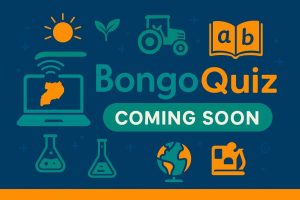Maps have been essential tools for navigation, exploration, and understanding geographical spaces for centuries. However, not all maps are created equal. The qualities of a good map ensure it is useful, accurate, and easy to read. This blog will delve into the essential qualities that make a map effective, using examples from various types of maps to illustrate these points. By understanding these qualities, you can better appreciate the art and science of cartography and make informed choices when selecting or using maps.
Contents
- 1 Introduction to Map Quality
- 2 1. Accuracy
- 3 2. Clarity
- 4 3. Detail
- 5 4. Scale Appropriateness
- 6 5. Legend
- 7 6. Orientation
- 8 7. Aesthetic Appeal
- 9 8. Relevance
- 10 9. Up-to-Date Information
- 11 10. Integration of Technology
- 12 Examples of Maps Exhibiting Good Qualities
- 13 Identifying Key Features on Maps with Ugandan Examples
- 14 Conclusion
Introduction to Map Quality
A map is more than just a visual representation of an area; it is a detailed, informative, and functional tool. The qualities of a good map are critical for conveying information accurately and efficiently. Whether for educational purposes, travel, or scientific research, a good map must meet certain criteria to be deemed effective. Below, we explore these essential qualities in detail.
1. Accuracy
Definition: Accuracy refers to the correctness of the information presented on the map.
Importance: Accurate maps provide reliable data that users can depend on for navigation, planning, and analysis. Errors in location, distance, or scale can lead to significant misunderstandings and potentially hazardous situations.
Example: Topographic maps, which show elevation and landforms, must be highly accurate to be useful for hikers and engineers. Inaccurate contour lines could mislead users about the steepness of terrain, leading to dangerous hikes or flawed engineering projects.
2. Clarity
Definition: Clarity involves the ease with which users can read and understand the map.
Importance: A clear map avoids clutter and uses legible fonts and symbols, ensuring users can quickly and easily find the information they need. Overcrowded or poorly designed maps can confuse users.
Example: City maps that highlight important locations such as hospitals, police stations, and tourist attractions should use clear symbols and avoid overcrowding to help residents and visitors navigate efficiently.
3. Detail
Definition: Detail refers to the amount of information provided on the map.
Importance: A good map includes all necessary details without becoming cluttered. This balance ensures that users have comprehensive information without feeling overwhelmed.
Example: Geological maps should show detailed information about rock types and fault lines but should balance this with a clean design to avoid overwhelming geologists with too much information at once.
4. Scale Appropriateness
Definition: Scale appropriateness means that the map’s scale is suitable for its intended use.
Importance: The scale of a map determines the level of detail and the area covered. A good map uses a scale that provides sufficient detail for its purpose without covering an unnecessarily large area.
Example: A road map for a city should use a large enough scale to show individual streets and landmarks, while a map of an entire country can use a smaller scale to provide an overview of major highways and cities.
5. Legend
Definition: A legend (or key) explains the symbols and colors used on the map.
Importance: Without a legend, users might misinterpret the symbols, leading to confusion. A well-designed legend ensures that all symbols are clearly explained.
Example: In a wildlife conservation area map, a legend might indicate different symbols for various species habitats, water sources, and walking trails. This allows visitors to understand the map fully and use it effectively.
6. Orientation
Definition: Orientation refers to the map’s ability to show direction, usually with a north arrow or compass rose.
Importance: Proper orientation helps users understand directions and relate the map to the real world. This is crucial for navigation and geographic understanding.
Example: Nautical charts used by sailors must be correctly oriented to ensure safe navigation. Misorientation could lead to navigational errors and potential hazards at sea.
7. Aesthetic Appeal
Definition: Aesthetic appeal means the map is visually pleasing.
Importance: An aesthetically appealing map is more engaging and easier to use. Good design principles can help highlight important features and make the map enjoyable to look at.
Example: Tourist maps often use bright colors and appealing designs to attract tourists and make navigation more enjoyable. These maps are not just functional but also enhance the tourist experience by being pleasant to use.
8. Relevance
Definition: Relevance means the map includes information that is pertinent to its intended use.
Importance: Including relevant information ensures the map meets the needs of its users without overwhelming them with unnecessary details.
Example: An evacuation map for a building should focus on exits, fire extinguisher locations, and assembly points, rather than unrelated details like the layout of offices or decorations.
9. Up-to-Date Information
Definition: Up-to-date information ensures the map reflects current conditions and data.
Importance: A map with outdated information can mislead users, rendering it ineffective or even dangerous in some situations.
Example: Road maps need regular updates to reflect new roads, changes in traffic patterns, and other relevant alterations. An outdated map could send drivers on routes that no longer exist or miss new, faster options.
10. Integration of Technology
Definition: Integration of technology refers to the use of modern tools to enhance the map’s functionality.
Importance: Modern technology can provide additional layers of information and interactivity, making maps more useful and accessible.
Example: Digital maps and GPS systems use real-time data to update routes, traffic conditions, and points of interest. Apps like Google Maps integrate user-generated content, live traffic updates, and satellite imagery to provide a comprehensive navigation tool.
Examples of Maps Exhibiting Good Qualities
- Google Maps: This widely used digital map excels in accuracy, clarity, and up-to-date information. It integrates real-time traffic data, provides detailed street views, and includes a robust legend for symbols and landmarks.
- Ordnance Survey Maps: These detailed topographic maps of the UK are renowned for their accuracy and clarity, providing hikers, planners, and geographers with detailed and reliable information.
- National Geographic Maps: Known for their aesthetic appeal and detailed information, these maps are not only functional but also beautifully designed, making them a pleasure to use and study.
Identifying Key Features on Maps with Ugandan Examples
- Hotels: Symbolized by a bed or “H” icon. Example: Serena Kampala Hotel.
- Botanical Gardens: Marked by a tree or leaf icon. Example: Entebbe Botanical Gardens.
- Markets: Represented by a shopping bag icon. Example: Owino Market, Kampala.
- Stadiums: Shown with a stadium or sports field icon. Example: Mandela National Stadium, Kampala.
- Railway Lines: Depicted as dashed lines. Example: Kampala to Mombasa Railway.
- Lakes: Illustrated with wavy blue areas. Example: Lake Victoria.
- Rocky Islands: Indicated by dark specks or irregular shapes. Example: Buvuma Islands.
- Ferry Terminals: Represented by a ferry icon. Example: Entebbe Ferry Terminal.


Leave a Reply